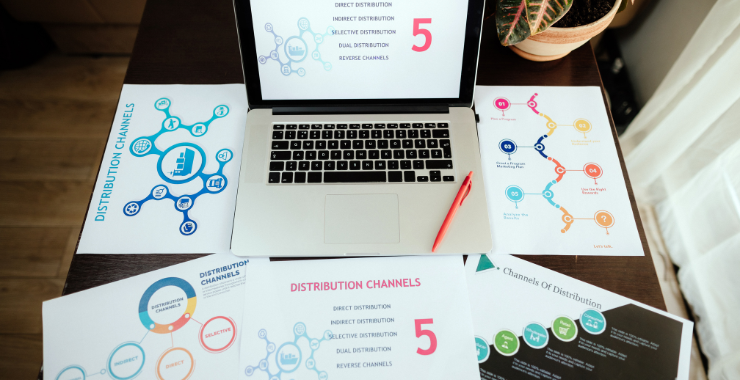In today’s fast-paced world, visual content stands out. It grabs attention, tells a story, and connects with people on a personal level. Cebu, with its vibrant culture and stunning landscapes, offers a rich canvas for brands to tell their stories. Visual storytelling is not just about pretty pictures; it’s about making a mark, sharing values, and building a community.
Let’s look at some real stories from Cebu. A local café uses Instagram to share photos of their daily specials, set against the backdrop of Cebu’s historical sites. A fashion retailer showcases their latest collection through a series of short, engaging videos featuring local landmarks. These aren’t just ads; they’re stories that weave the brand into the fabric of Cebu’s lifestyle.
You might wonder, how do we know if all this effort is worth it? How do brands measure the success of their visual content? The answer lies in the impact. It’s seen in increased engagement on social media, more foot traffic in stores, and a stronger connection with the community. By tracking key metrics like views, shares, and comments, brands can gauge the resonance of their visual stories and refine their strategies for even greater success.
Understanding Your Audience: Tailoring Visuals for Cebu’s Market
To connect with your audience, you first need to know who they are. In Cebu, where culture and tradition blend seamlessly with modernity, understanding your market is key. Are you speaking to the young professionals who frequent the city’s cafes and coworking spaces? Or perhaps the families who enjoy weekend outings to the beach? Knowing this shapes your visual content.
Identifying Your Target Demographics
Start with the basics: age, location, interests. Use social media analytics to see who interacts with your content. Surveys can also help, asking your audience what they want to see. This info tells you whether to focus on vibrant, energetic visuals or more serene, family-oriented images.
Customizing Content to Reflect Local Culture and Interests
Once you know who you’re talking to, tailor your visuals. If targeting young adventurers, highlight Cebu’s natural wonders and outdoor activities. For families, maybe create content around local festivals and family-friendly attractions. The key is showing your audience that you not only understand but also celebrate their lifestyle.
Visual Content Types and Formats Best Suited for Cebu Brands
Different stories require different storytelling tools. Here’s a look at the most effective visual content types for Cebu brands.
Photography: Capturing the Essence of Cebu
Photographs have the power to transport viewers. For a hotel, it might be inviting images of a sunset view from the balcony. A local diner could share mouth-watering close-ups of traditional dishes. The goal is to make viewers feel they can step into the photo.
Video Content: Stories that Resonate
Videos bring your brand’s story to life. A behind-the-scenes look at a local craftsman can captivate an audience, showing the skill and tradition behind their work. Or a quick tutorial on preparing a Cebuano delicacy can engage food enthusiasts.
Infographics: Simplifying Complex Information
Infographics are great for presenting facts and figures in an engaging way. A travel agency might use an infographic to compare the best times to visit Cebu’s top destinations. Educational yet engaging, these visuals make information accessible.
How Cebu Brands Can Effectively Incorporate Visual Content into Their Marketing Strategies
Creating a visual content strategy requires more than just producing photos and videos. It’s about telling a cohesive story that aligns with your brand’s values and goals.
Planning Your Visual Content Strategy
Start by defining your objectives. Increase brand awareness? Drive more website traffic? Your goals will guide your content creation. Next, consider your resources. Do you have the skills in-house, or do you need to collaborate with local creatives? Finally, create a content calendar. Timing is everything, especially when aligning with local events or seasons.
Creating High-Quality, Relevant Visuals
Quality matters. Invest in good photography and video production. Your visuals should reflect the beauty and vibrancy of Cebu. They should also be relevant to your audience’s interests and needs, adding value to their lives.
Distributing Your Visual Content Across the Right Platforms
Not all platforms are created equal. Instagram and Facebook might be great for consumer brands, while LinkedIn could be better for B2B. Consider where your audience spends their time and focus your efforts there. Also, don’t overlook the power of your website and email newsletters as platforms for sharing visual content.
Measuring the Impact and Effectiveness of Your Visual Content Strategy
Knowing if your visual content hits the mark involves more than counting likes and shares. It’s about understanding the deeper impact on your brand’s goals and audience engagement. Here’s how Cebu brands can get a clear picture of their visual content’s effectiveness.
Key Performance Indicators (KPIs) to Watch
- Engagement Rates: Look beyond basic likes. Comments, shares, and the time spent on your content offer insights into how much your audience values your visuals.
- Website Traffic: For content linked to your site, monitor spikes in visits. Use tools to see if visitors from social platforms are exploring further than the landing page.
- Conversion Rates: If your visual content includes calls-to-action, track how many viewers take the next step. Whether it’s signing up for a newsletter or making a purchase, conversions are a clear sign of content effectiveness.
- Audience Growth: Steady growth in your social media followers indicates your visual content is attracting new interest to your brand.
Tools and Techniques for Analyzing Visual Content Performance
Several digital tools offer in-depth analytics for social media and website performance. Google Analytics is a staple for tracking website activity, while platforms like Instagram and Facebook provide their own insights. Look for patterns in what types of content drive the most engagement and adjust your strategy accordingly.
Challenges and Solutions in Visual Content Marketing for Cebu Brands
Every marketing strategy faces hurdles, and visual content is no exception. Here are common challenges Cebu brands may encounter, along with solutions to overcome them.
Overcoming Budget Constraints
High-quality visuals might seem costly, but creativity can stretch your budget. Collaborate with local artists or photographers who are willing to exchange services for exposure. Use smartphones with good cameras and free editing software to create content in-house.
Standing Out in a Crowded Market
To differentiate your brand, tell stories that only you can. Focus on what makes your brand unique in Cebu’s landscape. Perhaps it’s your history, your approach to sustainability, or your connection to local communities. Authenticity catches attention.
Conclusion
As Cebu continues to grow, so does the opportunity for brands to connect with their audience through visual content. The key to success lies in understanding your audience, creating high-quality and relevant visuals, and continuously measuring and refining your strategy. By embracing creativity and staying true to your brand’s story, you can leverage visual content to not only reach but also resonate with your target market in Cebu.
Embracing innovation in visual content and staying adaptable to the changing digital landscape will ensure your brand not only keeps up but stands out. Remember, the goal is to build lasting connections with your audience, turning viewers into loyal customers and brand advocates. With thoughtful planning and execution, visual content marketing can drive your brand forward in Cebu’s competitive market.





